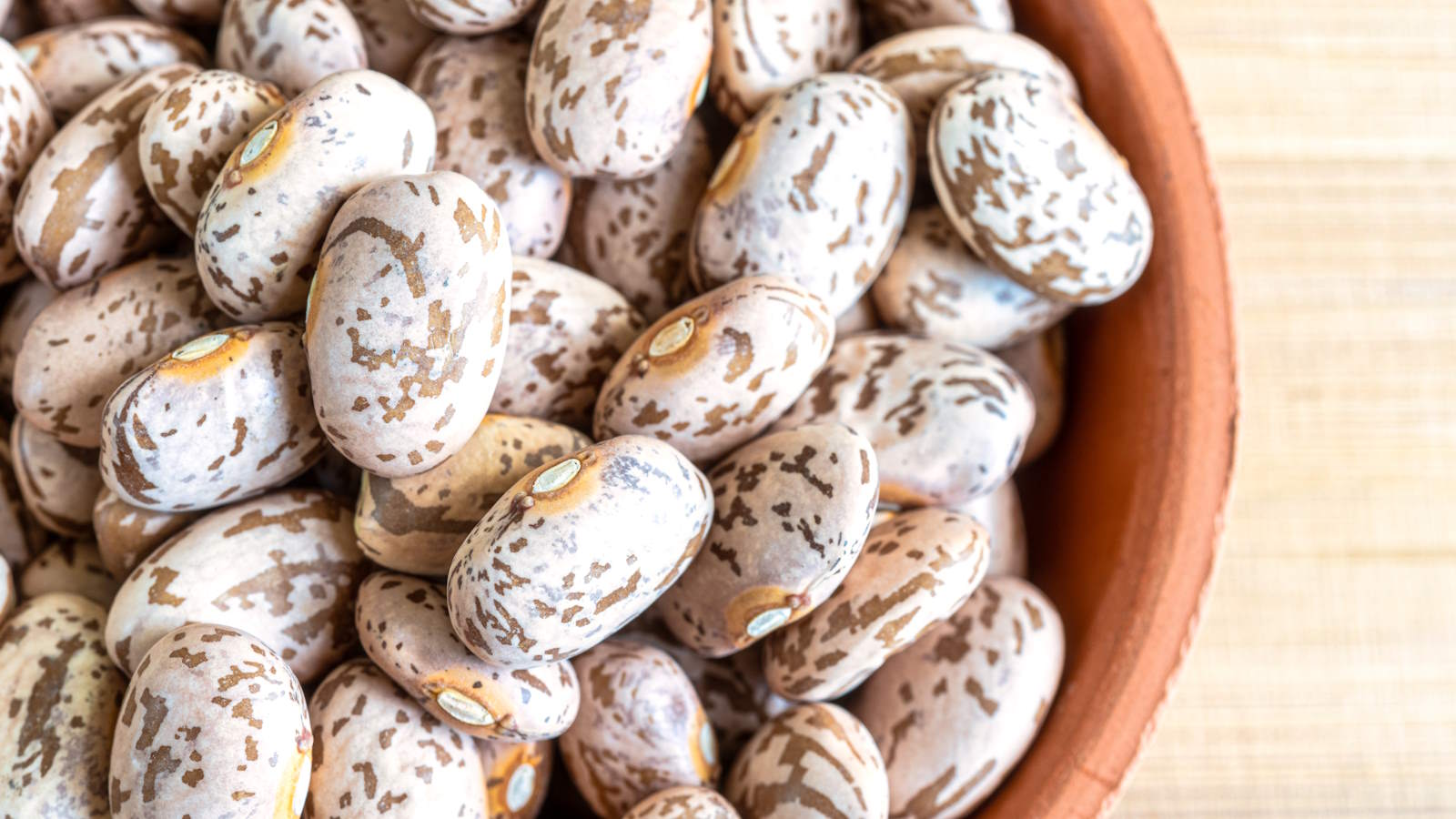
Pinto beans are a really popular type of bean native to Mexico and used widely in many Mexican dishes. It is a legume which has been cultivated for thousands of years and can be a simple crop to grow in home vegetable gardens.
The plants come in two different types, namely bush bean and vining bean varieties. As the names suggest, one grows smaller and more compact while the other climbs and needs a trellis or fence for support.
If you are looking to expand the range of crops you grow in your vegetable garden, then pinto beans should definitely be considered. Especially if you have enjoyed growing other types of beans, as their maintenance can be very similar.
To help remove any potential mystery about the crop, we hear from expert growers about how to grow pinto beans at home.
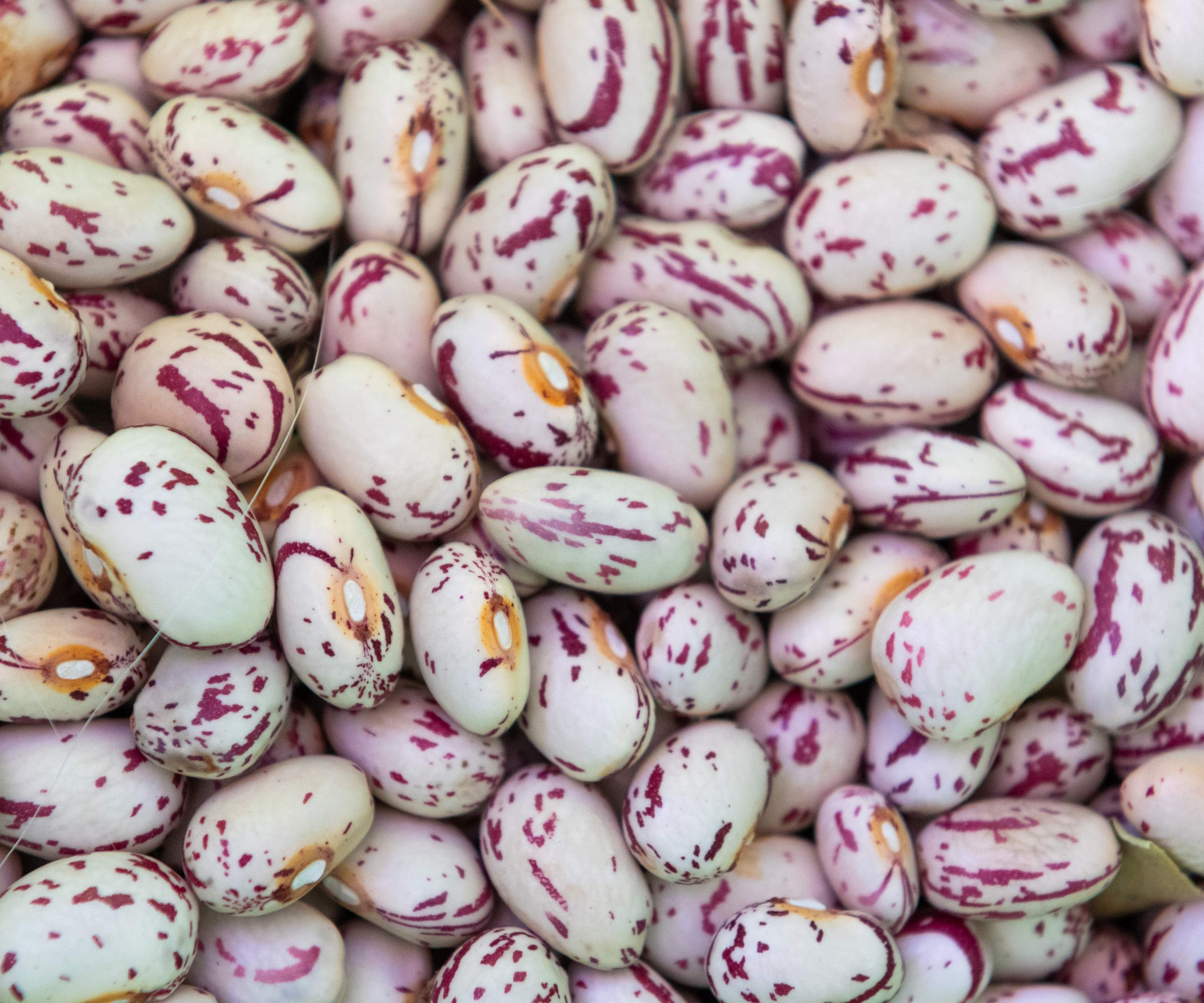
Are pinto beans an easy crop to grow?
If you have ever thought about how you grow pinto beans, the potential difficulty of the crop will likely have come into your thoughts. The good news is that pinto beans are a relatively easy crop to grow in a home kitchen garden.
Pinto beans can even be an ideal vegetable plant for beginners. Providing you can give them the right amount of heat and care, they tend to grow without much fuss.
How to grow pinto beans from seed
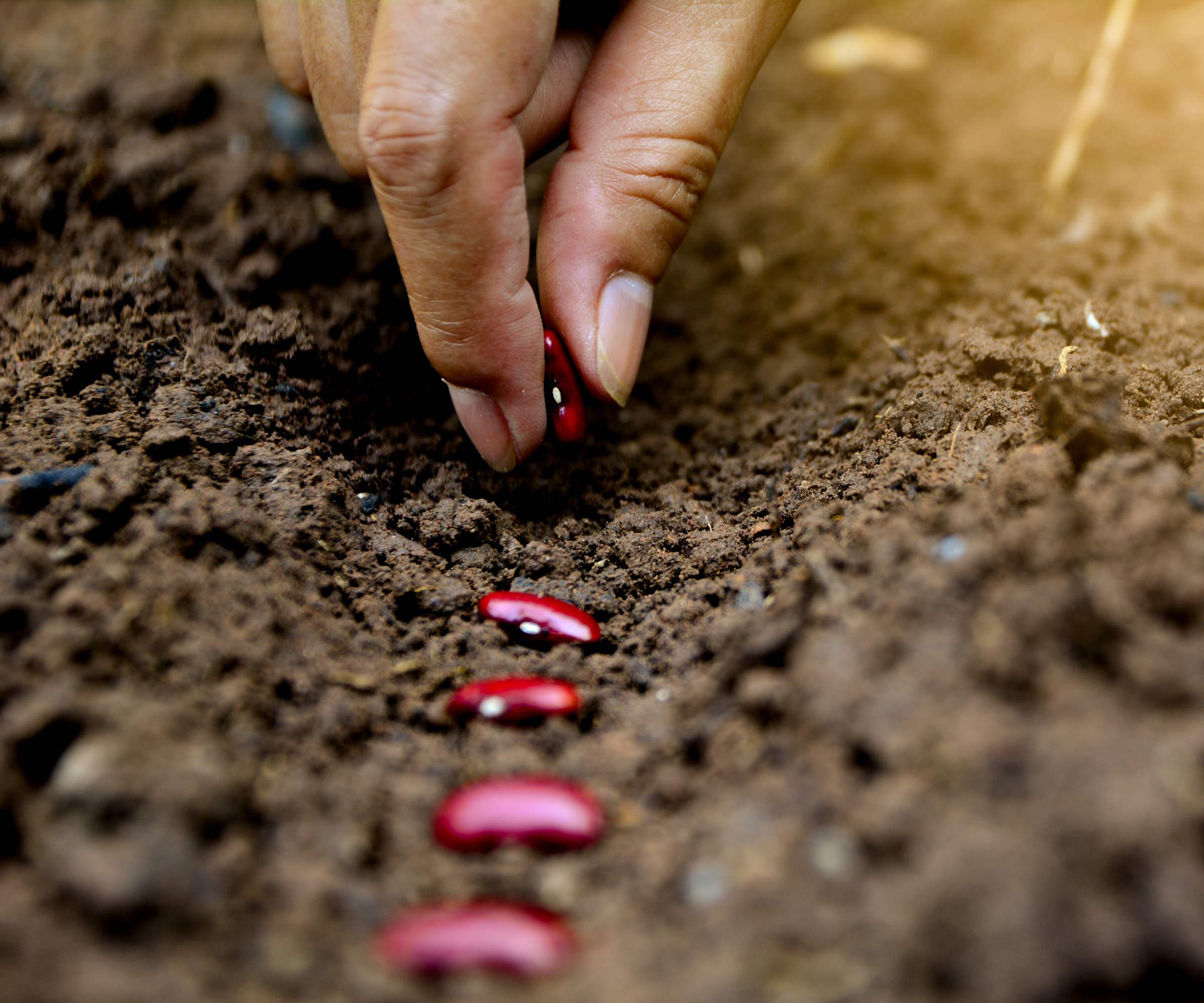
When it comes to how to plant pinto beans, the method used to sow the crop is very important. Many vegetable plants can be sowed early indoors, such as in a greenhouse or on a windowsill, and the seedlings transplanted outside later in spring. However, that approach will not work with pinto beans.
‘They don’t handle transplanting well, so it’s best to avoid starting indoors,’ says Kiersten Rankel, garden expert and botanist for the Greg App. ‘A pro-tip is to sow a batch of seeds every two weeks so you’ll have a crop of beans ready to harvest throughout the summer.’
Pinto beans are a heat-loving vegetable and do need warm soil to germinate successfully. The exact time to sow will depend on your US hardiness zone as they are best sown once the risk of frosts has passed and the soil has warmed to a sufficient temperature.
Gail Pabst, experienced gardener and marketing director for the National Garden Bureau, recommends: ‘Pinto beans are warm-season crops and should be planted directly into the soil after it warms up, usually in late spring or early summer.
‘The optimum soil temperature for germination is 70–90°F and the air temperature is over 60 degrees.’
The pinto beans themselves are best soaked overnight prior to sowing and planted with the eye of the bean facing downward. Each bean wants to be planted 1.5 inches deep and 4-6 inches apart into rows that are spaced at least two feet apart. Water the beans well after planting and they will germinate within two weeks.
If you plant vining varieties of pinto beans they will need a trellis or fence put in place for them to climb. It is best to have that trellis in place prior to planting, to avoid disturbing the beans by attempting to install it at a later date.
Packets of pinto beans for planting, ranging from 30g to 25lb, that can grow beans for shelling in around 100 days. They are easy to grow and have a shelf life of five years.
Where to grow pinto beans
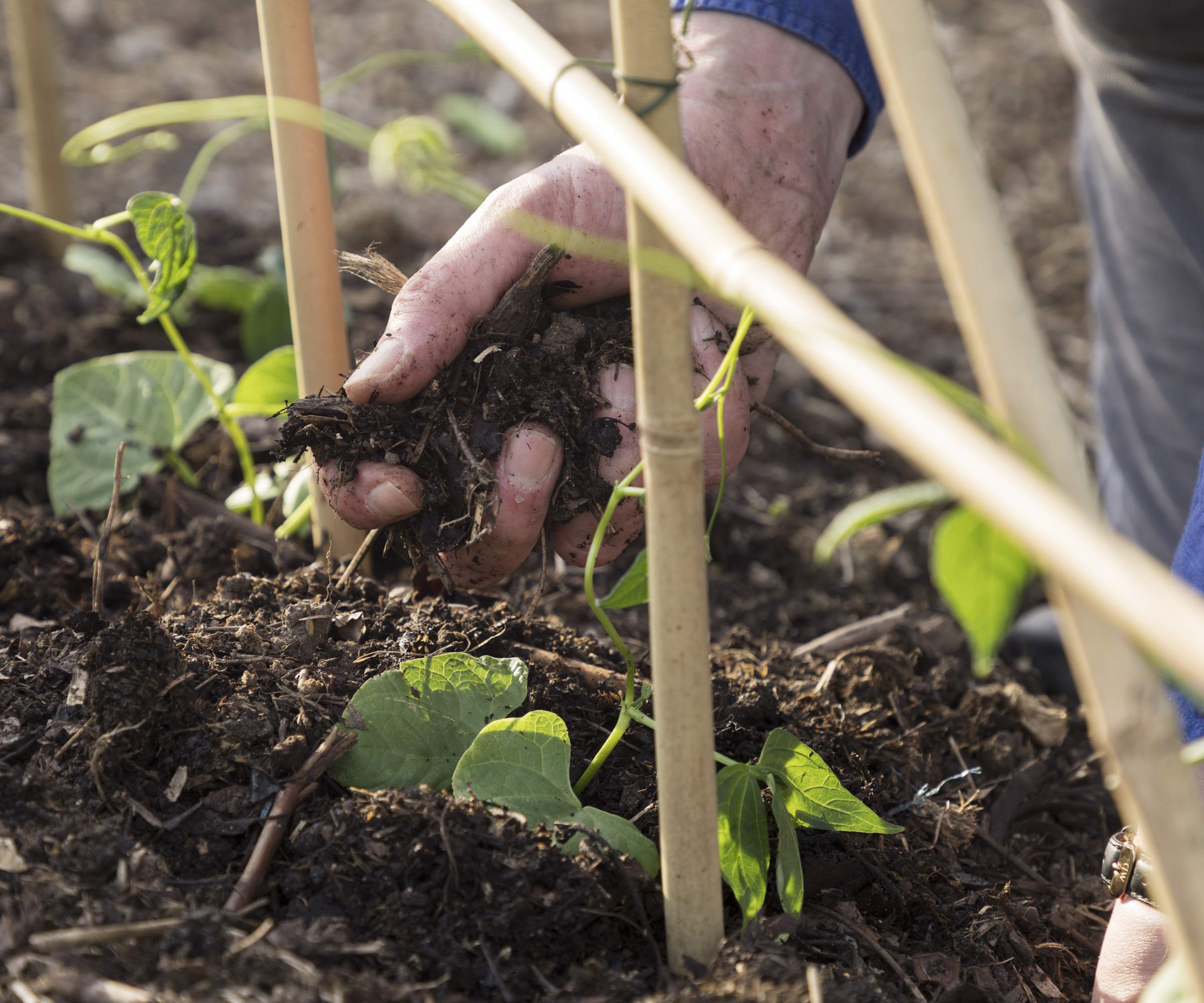
An ideal spot to grow pinto beans is going to be warm and sunny - the beans are native to Mexico so that should give a hint to the type of location they want to grow in.
Carson Spears, general manager of Seeds 'n Such, describes pinto beans as ‘full-sun loving plants’ and he recommends growing the crop ‘in an area that receives direct sunlight for the majority of the day’ - ideally where they get 6-8 hours of full sun each day.
Pinto beans prefer a soil type that is fertile and well-draining; the addition of organic matter, such as compost, well-rotted manure, or leaf mold prior to planting can boost low-quality soils if required. The addition of such compost, or alternatively fertilizer, before planting can provide all the nutrients the plants need throughout the season and remove the need for additional fertilizer.
‘Fertilize with a balanced, all-purpose fertilizer before planting, and avoid excessive nitrogen as it may result in excessive foliage growth and reduced bean production,’ advises Carson Spears.
He also recommends: ‘Mulching around the base of the bean plants can help to retain moisture, suppress weeds, and regulate soil temperature.’ A two-inch layer of mulching materials would be ideally applied after planting pinto beans.
An organic all purpose 2-2-2 fertilizer that releases nutrients quickly and continues to feed for several months
Care tips for growing pinto beans
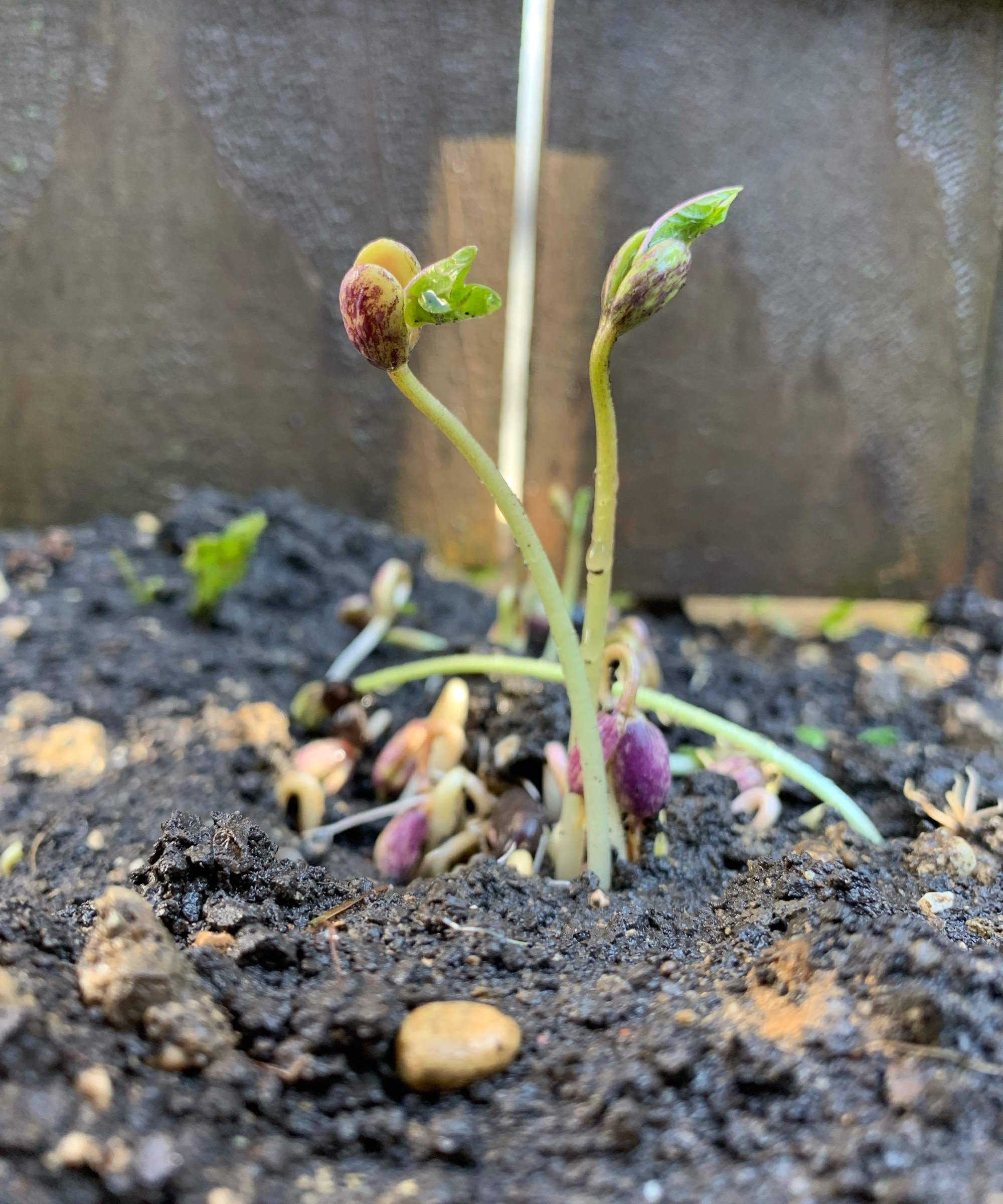
Watering is the most important maintenance task to get right during the growing season. Maintain a close eye on when to water plants, especially during the hot summer months. The soil wants to be kept consistently moist after planting to help seedlings develop and build a strong root system.
Consistent and regular watering is also very important during the plant’s flowering stage - as it can impact on the fruiting. Pinto beans do not like to sit waterlogged, but can tolerate the soil drying out. However, try to keep the soil moist during summer as the plant’s do have shallow roots and don’t delve far down in search of moisture.
When it comes to how to water plants, Carson Spears says: ‘Water at the base of the plants to avoid wetting the foliage, which can lead to disease.’ Watering the foliage is a common garden watering mistake and can leave plants susceptible to fungal diseases, such as mildew.
Keep the area free of weeds during the growing season, as these unwanted plants will steal vital water and nutrients away from your pinto bean plants and it can impact on the eventual yield of beans.
There are some potential pests to keep a close eye out for. These include aphids and spider mites, which can be dealt with simply through spraying with insecticidal soap, available at Amazon, or a homemade bug spray.
Mexican bean beetles can damage plants and munch through leaves. The beetles can be picked off by hand when they are seen, or the likes of insecticidal soap, diatomaceous earth, or neem oil sprays can combat the pest. Companion planting around pinto beans with the likes of marigolds, nasturtium, garlic, or rosemary can be beneficial, as those plants are known to deter Mexican bean beetles.
How to harvest pinto beans
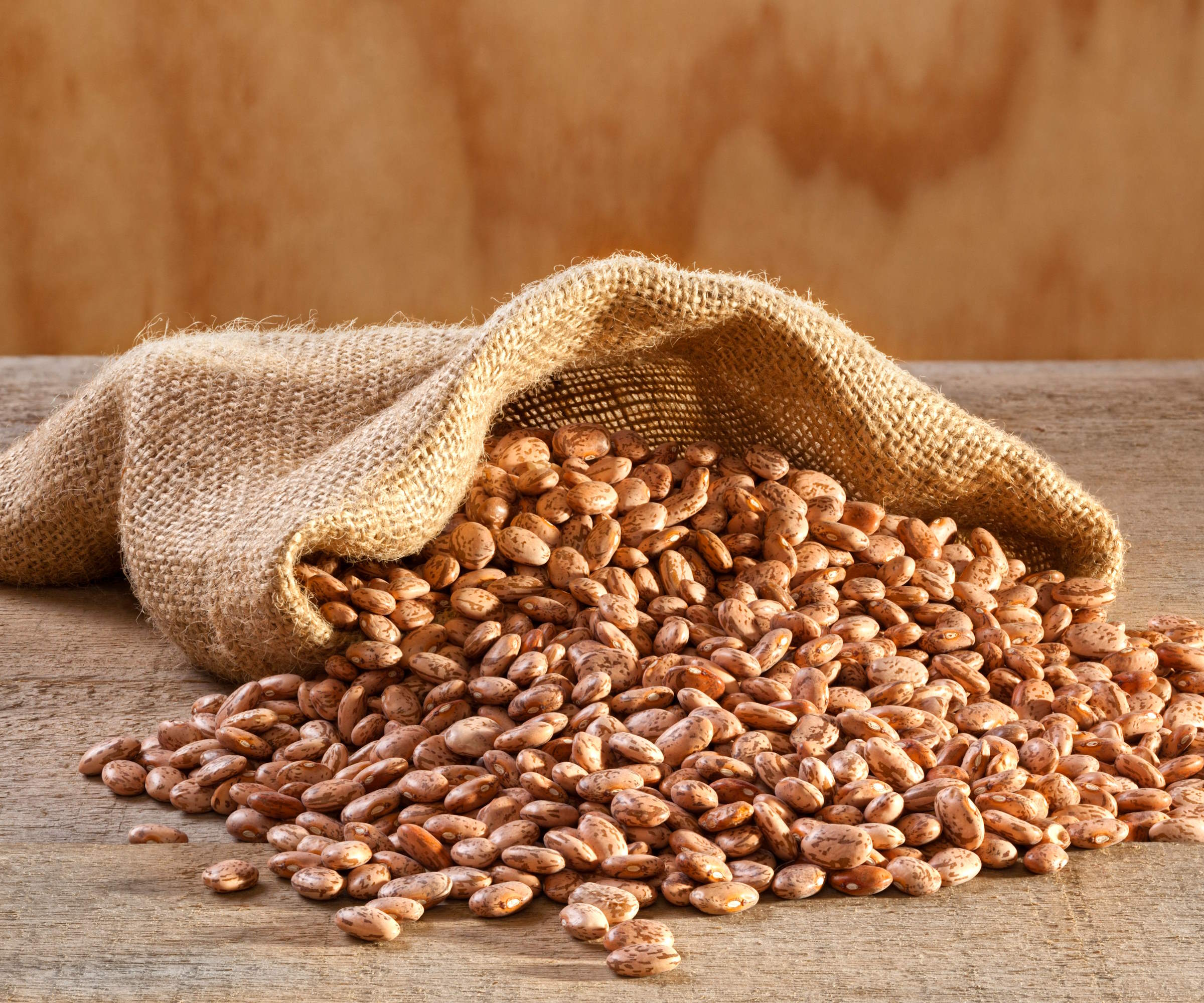
Pinto beans can be harvested green, where they are treated like snap peas, and the immature pods can be harvested when they are 4-6 inches long and pencil-thick. However, most growers will grow them to maturity and shell the beans to eat or dry. If you want to harvest dry pinto beans, it is a case of playing the waiting game and then having to dry and shell the beans from their pods.
It can take up to 100 days from sowing for the beans to be harvestable. To help you know the perfect time to harvest, Melissa Emerson from Pinetree Garden Seeds says: ‘Leave the beans on the plant until most of the leaves have turned brown and the pods are dried and withered.’
She adds: 'If fall weather is wet or frost threatens the harvest, pull up the plants and finish drying indoors.’
The plant should be pulled out of the ground completely and can be hung upside down in a dry and ventilated area to complete the drying process. Small quantities of pinto beans can be separated from the pod by hand, while larger batches can be threshed in a barrel or burlap sack.
‘Dry beans can be stored for up to a year in an airtight container. Just be sure they’re completely bone dry (inside and out) before storing or they will mold,’ says Kiersten Rankel.
How to grow pinto beans in a container
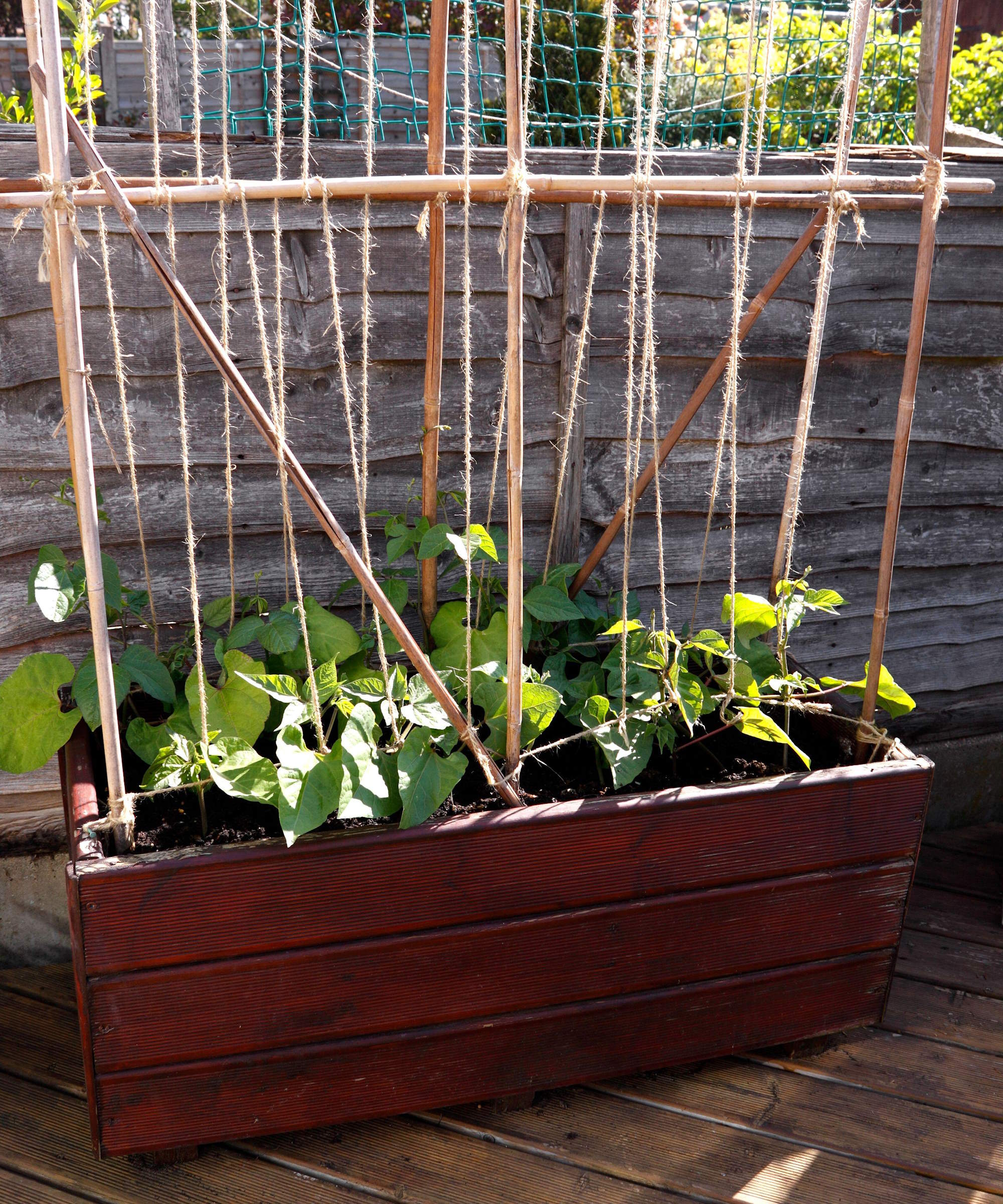
Pinto beans will grow best outdoors in garden beds, but the plants can successfully be cultivated in raised beds or as part of a vegetable container garden in a small backyard.
If you do want to try growing pinto beans in a pot, compact varieties of pinto beans will be more suited and Carson Spears recommends ‘making sure the pot is at least 10 inches in diameter and you have a good potting mix that drains well and has ample organic matter’.
Pinto beans growing in pots will require more regular watering than plants in the ground and also will benefit from regular feeding with liquid fertilizer that is low in nitrogen and designed for growing vegetables, such as this liquid feed available at Amazon.
FAQs
How long does it take to grow pinto beans?
Pinto beans can take between 70-100 days to go from sowing the seeds directly into the soil and the dried beans being ready to harvest. The exact timing will depend on your location, where and when you planted the crops, and the weather conditions throughout the season.
The signs that the plant is ready to harvest include when the pods become dry. It is important to get the timings right with the crop as Gail Pabst, experienced gardener and marketing director for the National Garden Bureau, advises ‘don’t plant too early and don’t harvest too early’ when it comes to growing pinto beans.
How tall do pinto beans grow?
Pinto beans are either low-growing bush bean plants or climbing varieties. The bush bean types tend to reach around 18 inches in height, while the vining types can get to heights of around 72 inches. The vining varieties of pinto beans will need a sturdy trellis or support to grow up.
There are some great reasons to grow pinto beans, if you can give them the sun and warmth they require to thrive. An alternative bean to grow in temperate climates is kidney beans, which prefer a mild climate and can also be simple crops to grow for their range of culinary uses.







